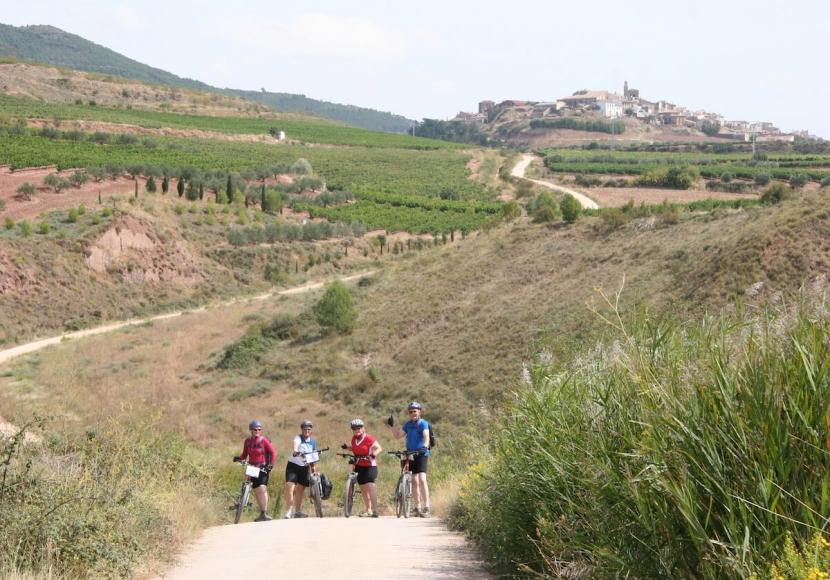July 20, 2019
The Camino de Santiago is a network of ancient pilgrim routes that stretch across Europe and lead to the reputed burial grounds of the apostle Saint James. Discovered in the 9th century and located in the great Santiago de Compostela cathedral in northwestern Spain, Saint James’s tomb has been visited by millions of pilgrims on foot and in more recent years, by bike. There are numerous trails throughout Spain that are perfect for mountain biking; the various Camino de Santiago routes have become more popular among Westerners in recent years after the release of the popular movie “The Way,” starring Martin Sheen, and the book “The Pilgrimage” by famous author Paulo Coelho.
Many visitors complete the pilgrimage for religious beliefs and are moved by their faith, but there is also a large group of pilgrims that follow the route for a personal challenge, to find a spiritual connection to the world, and for their interest in history, culture, and architecture. No matter what your reasons are for experiencing the ancient pilgrimage route, everyone walks (or bikes) away from the Camino de Santiago transformed. After all, it’s hard to return home after marvelling at the rolling hills of the Spanish Pyrennees, befriending other pilgrims from around the world, and dining among medieval architecture without a new and refreshed perspective on the beauty of the world around us.
Follow in the footsteps of pilgrims (but avoid the blisters) by experiencing the Camino de Santiago by mountain bike.
5 Reasons to Ride the Camino de Santiago
1. Time
Depending on the route you take, walking to the Camino de Santiago can take weeks or months with long days on the trail. Biking the Camino allows you to cover more ground over the same number of days, and you’re able to bike at a relaxed pace. Walking from Pamplona to Santiago de Compostela takes around 28 days, whereas you can bike from Pamplona to Santiago de Compostela in about 15 days. Cycling the Camino may be more a more realistic option for visitors who have limited time off from work and home life, but are still looking to experience a spiritual and challenging adventure.
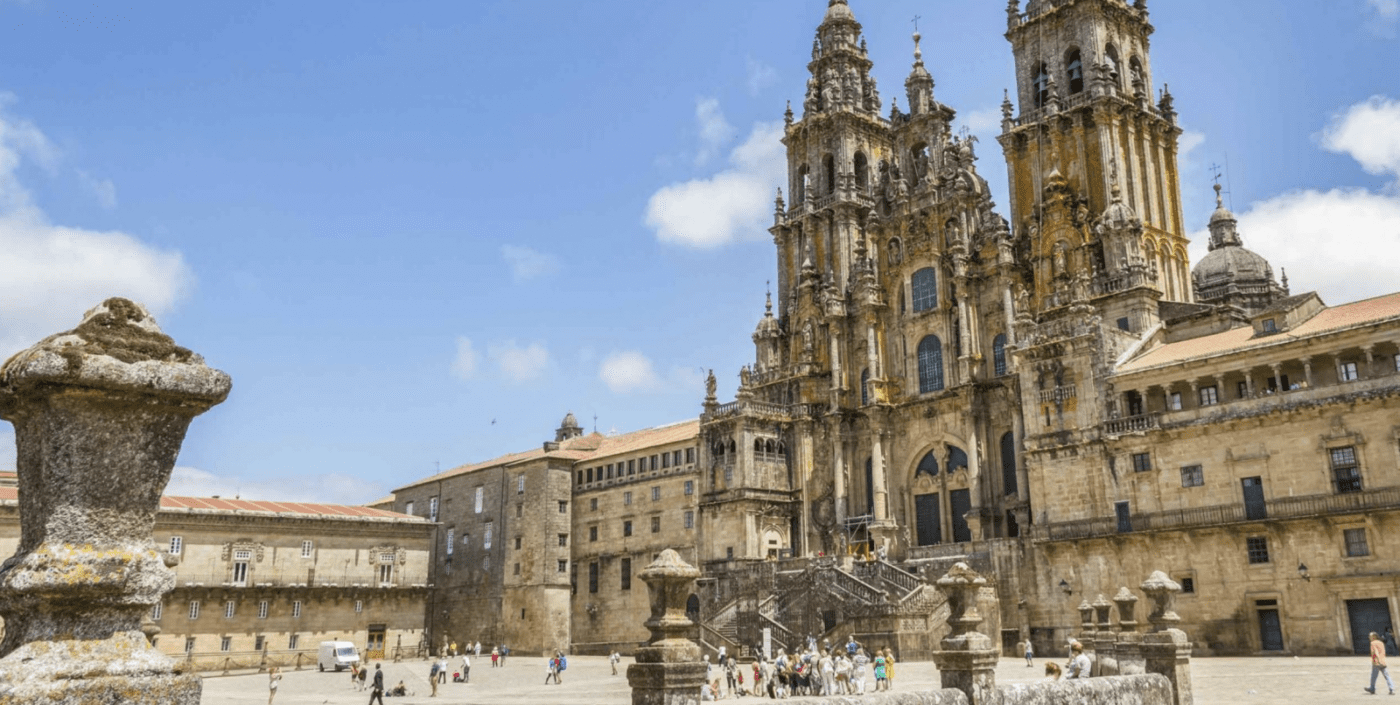
2. Get Off the Beaten Track
Most (walking) pilgrims follow a fairly direct path to the cathedral in Santiago de Compostela, but mountain biking the Camino gives you more time to explore trails less travelled and small villages outside the popular walking routes. Taking a ten-kilometre detour on foot vs. cycling is a much different experience. Cycling also gives you more flexibility with your itinerary. If you make an unexpected 2‑hour stop to explore a winery or a cathedral, it’s much easier to make up that time on a bike rather than walking — and you’ll still make it to your hotel for evening appetizers and wine.
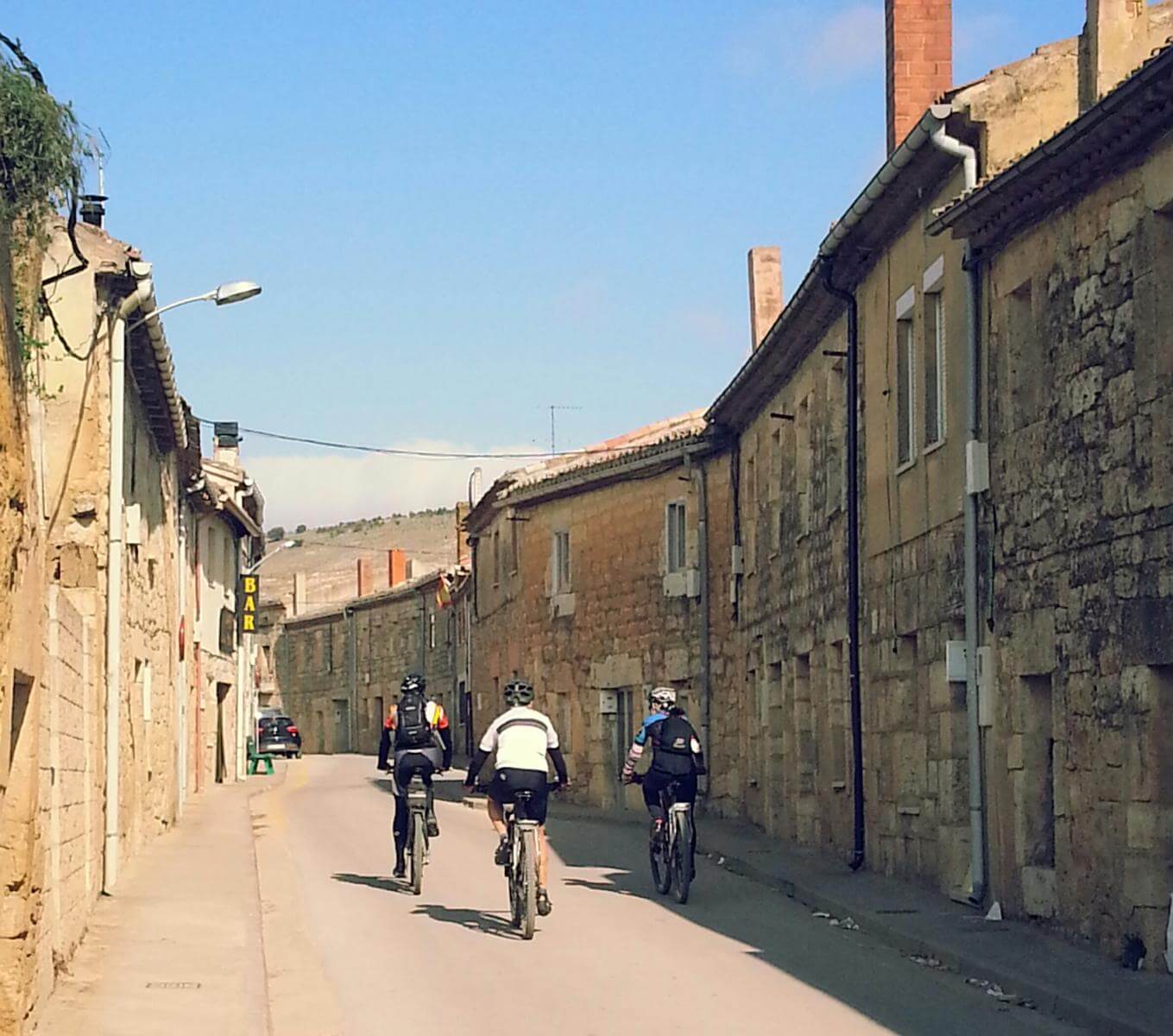
3. Help the Locals
Hiking the Camino de Santiago has become very popular and it has brought tourism dollars and positive economic impacts in each region. This is great news if you’re a hotel owner, shop keeper or restaurant manager in Leon, Logrono or other popular cities along the route, but venturing outside the main walking routes (with a bike!) helps business owners in lesser-known towns reap economic benefits as well. There are dozens of beautiful towns just off the Camino that are uncrowded, quieter and just as impressive.

MOUNTAIN BIKE THE CAMINO
Follow in the footsteps of pilgrims across Northern Spain
** format/insert this block**
Experience the Camino hassle-free
(add button/ link to tour)
15 days of guided mountain biking on the famous Camino de Santiago
Unique & comfortable lodging along the thousand-year-old pilgrimage route
Front-Suspension mountain bike rental and on-trail bike maintenance
All meals (exception to 2 lunches & 2 dinners) and luggage transfers
4. Physical Challenge
Biking the Camino is challenging. There are some flat sections, but you will also come across rolling hills and mountainous terrain. The best part… you can conquer the hills without the risk of bad blisters from hiking shoes and cover more terrain. Biking can also be gentler on your joints, leaving you more energized and prepared to travel the Camino for multiple days in a row. Cycling the Camino is perfect for Novice — Intermediate riders who are relatively fit and have a keen sense of adventure (but also enjoy a comfortable bed at night and delicious Spanish cuisine).
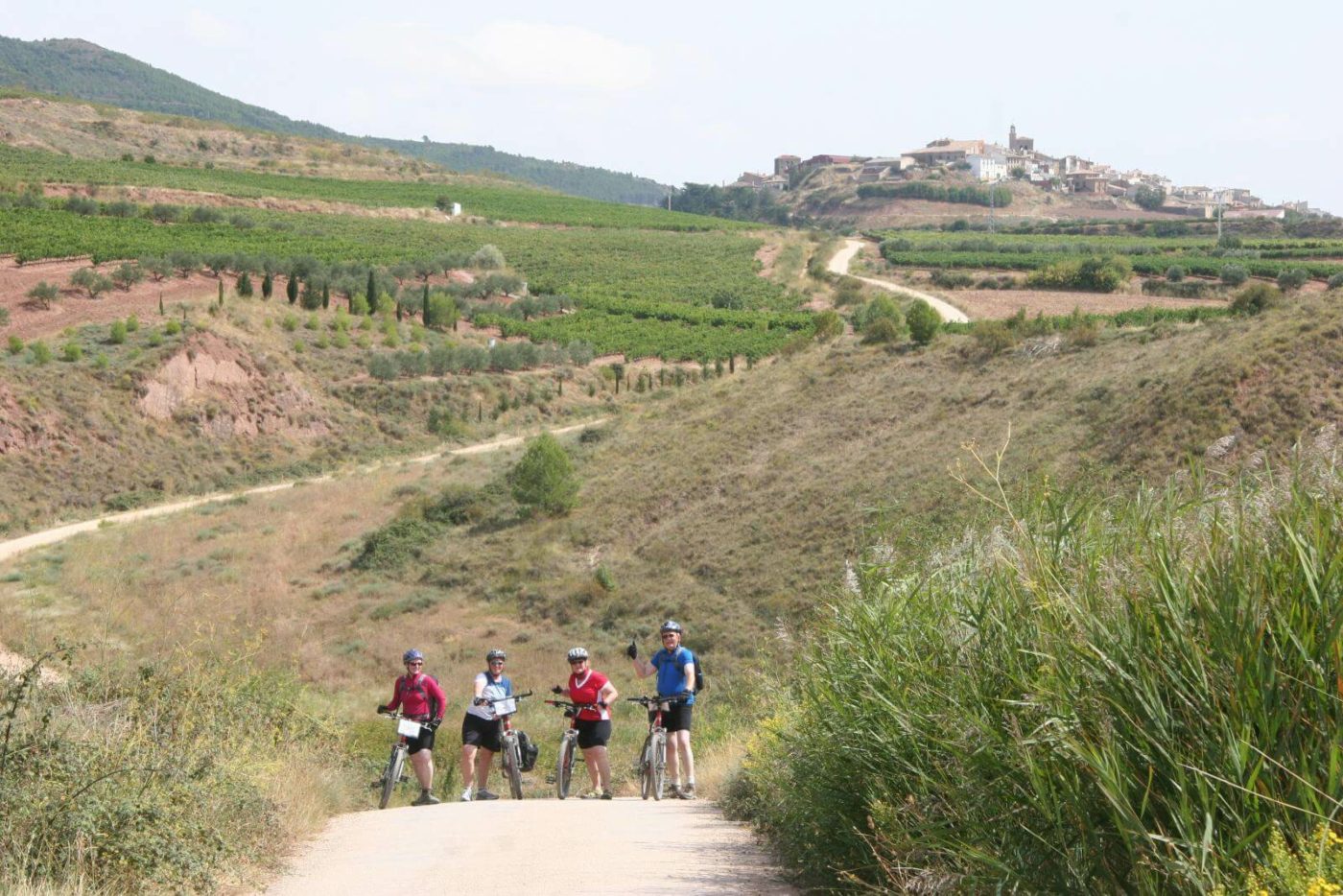
5. Transformation
There is a special bond that forms between mountain bikers that were brought together for their love of not only a sport but a way of life. This bond is multiplied when you’re following the path of ancient pilgrims along a route known for its beauty and tendencies to help travellers slow down and live in the moment. After biking 200 kilometres, you will receive the Compostela Certificate as an official document of your transformative journey. You can also keep track of your progress with a Pilgrim Passport and receive stamps along the route from hotels and establishments that you visit. The passport often ends up being a treasured possession as it is a great reminder of all the places where you stopped and stayed overnight.
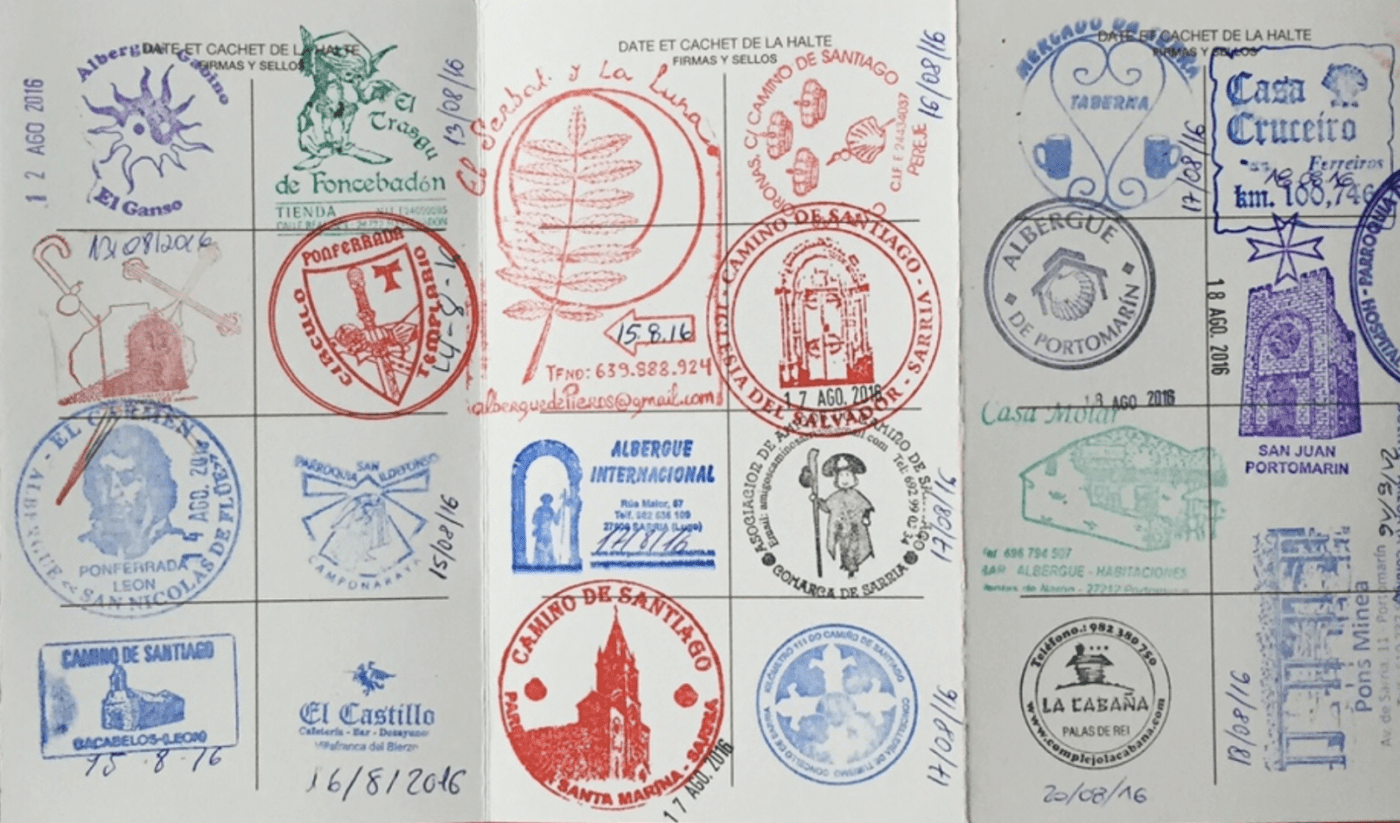
Is it time to experience the Camino de Santiago by bike?
We recently partnered with our sister company, Bicycle Adventures to offer a 15-day and 7‑day fully guided and supported mountain bike trip on the Northern Spanish route of the Camino de Santiago. Forget the hassle of trying to plan your vacation and join us for the trip of a lifetime along the Camino.

